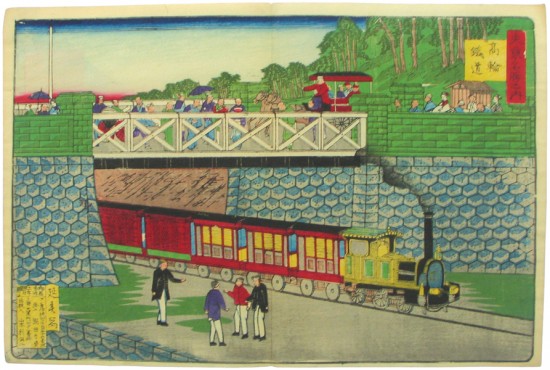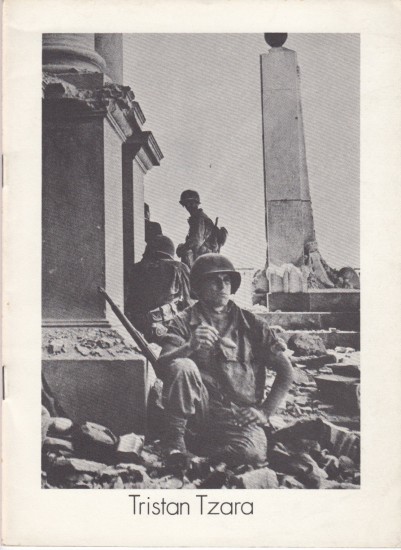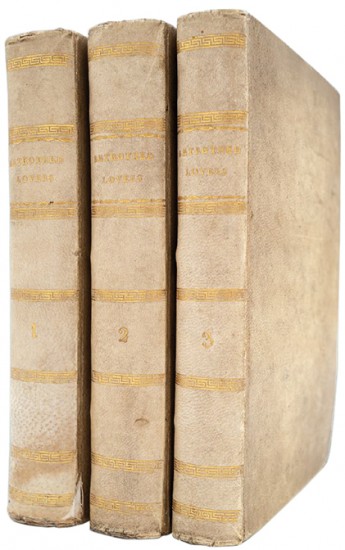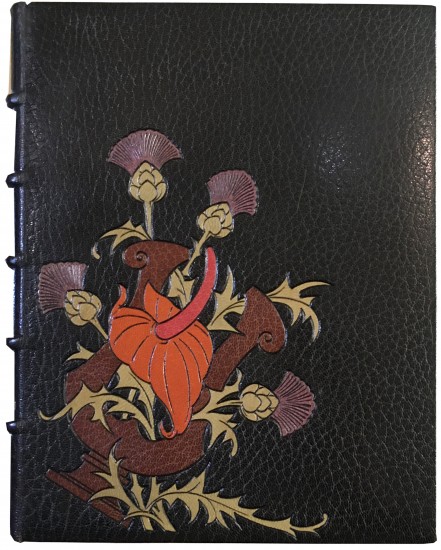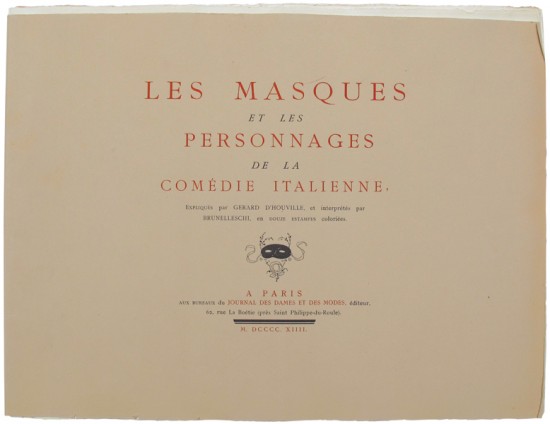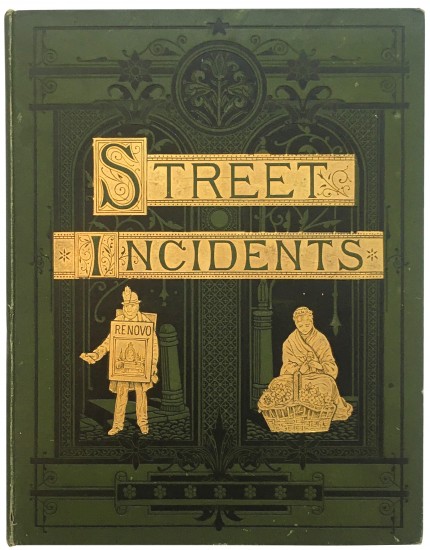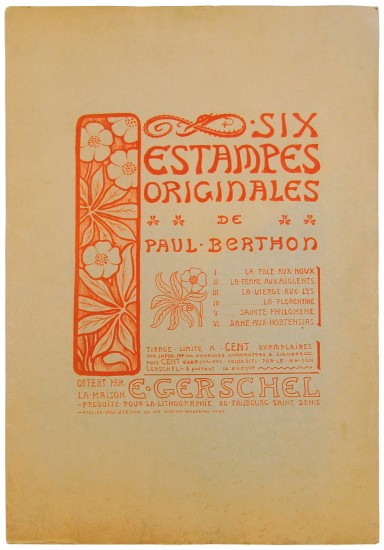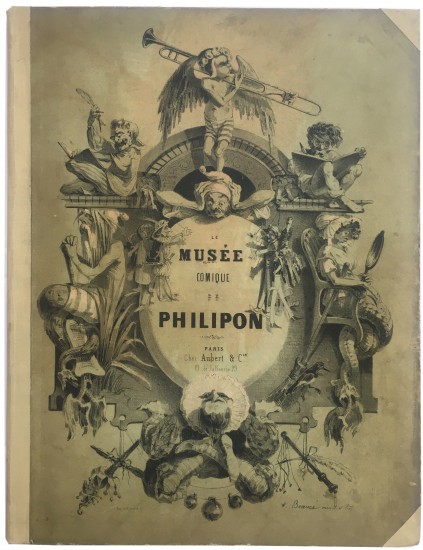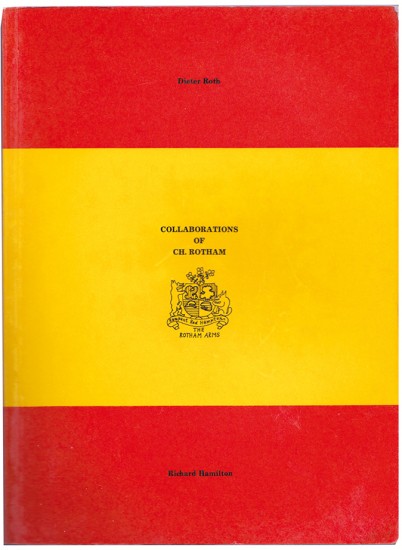Tôkyo Meisho No Uchi. (The Scenic Places of Tokyo)
Hiroshige Iii, Kunitoshi, Mosai (yoshitora), Ikkei & Nobuhide
(Tokyo). c.1875
Sold
A delightful composite album of colour woodcuts demonstrating the changes in Japanese society at the Meiji Restoration.
The woodcut views, by a number of late Ukio-E artists, depict prominent scenes in Tokyo and are peopled with characteristic Japanese figures in kimono and geta, however modernity intrudes on many of the scenes in terms of dress, technology and recreation and it is this juxtaposition that provides the album with its charm. Figures throughout the album are depicted in Western dress, with cane, pin stripe clothing, frock coat, watch and chain and spats and, in particular, head wear ranging from top-hatted figures to coachmen in bowler hats. Further, many of the plates feature horse-drawn carriages - including the archetypal hansom cab - of a Western design, trains (Japan's first train ran in 1872) and buildings with a distinctly Western appearance constructed from brick and stone.
One of the most intriguing plates depicts a horse race with a number of horses and jockeys racing around a circuit with a large crowd, the horses depicted in standard pre-Muybridge style with all legs outstretched. Japan had had a long tradition of ceremonial racing (beginning as early as the 8th century) generally at shrines or Imperial festivals but it took the establishment of the Yokohama Race Club by foreigners in 1861 to bring racing in a Western sense to Japan. It seems clear that after the Yokohama beginning, by the 1870s racing had spread to Tokyo. Continuing the animal theme, a further plate depicts - albeit in a peripheral sense - a figure walking a dog.
The Meiji Restoration (1868), with the resignation of Tokugawa Yoshinobu and the return of his political prerogatives to the Emperor, marked the final decline of the Tokugawa Shogunate as the dominant political force in Japan and its replacement with an oligarchy under the ultimate, albeit nominal, power of the Emperor. This passage of power became the impetus for the increasing industrialisation of Japan, the development of its status as a world power and emergence as a military force.
The woodcut views, by a number of late Ukio-E artists, depict prominent scenes in Tokyo and are peopled with characteristic Japanese figures in kimono and geta, however modernity intrudes on many of the scenes in terms of dress, technology and recreation and it is this juxtaposition that provides the album with its charm. Figures throughout the album are depicted in Western dress, with cane, pin stripe clothing, frock coat, watch and chain and spats and, in particular, head wear ranging from top-hatted figures to coachmen in bowler hats. Further, many of the plates feature horse-drawn carriages - including the archetypal hansom cab - of a Western design, trains (Japan's first train ran in 1872) and buildings with a distinctly Western appearance constructed from brick and stone.
One of the most intriguing plates depicts a horse race with a number of horses and jockeys racing around a circuit with a large crowd, the horses depicted in standard pre-Muybridge style with all legs outstretched. Japan had had a long tradition of ceremonial racing (beginning as early as the 8th century) generally at shrines or Imperial festivals but it took the establishment of the Yokohama Race Club by foreigners in 1861 to bring racing in a Western sense to Japan. It seems clear that after the Yokohama beginning, by the 1870s racing had spread to Tokyo. Continuing the animal theme, a further plate depicts - albeit in a peripheral sense - a figure walking a dog.
The Meiji Restoration (1868), with the resignation of Tokugawa Yoshinobu and the return of his political prerogatives to the Emperor, marked the final decline of the Tokugawa Shogunate as the dominant political force in Japan and its replacement with an oligarchy under the ultimate, albeit nominal, power of the Emperor. This passage of power became the impetus for the increasing industrialisation of Japan, the development of its status as a world power and emergence as a military force.
4to. (240 x 180 mm). 30 colour woodcut plates, each on single folded sheet (240 x 360 mm), pasted together to form accordion fold-out album, each plate with the artist's printed signature and the date of the impression. Contemporary blue patterned paper wrappers, small pasted label with manuscript '632' in blue ink to upper wrapper.
#39137
